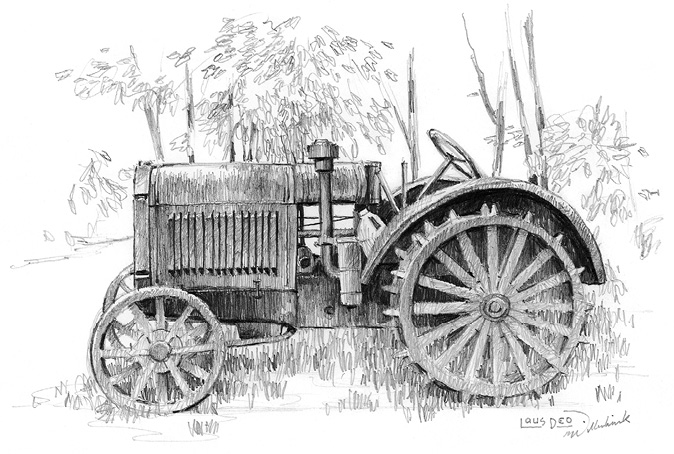
The Old Tractor
Graphite on drawing paper
11″ × 14″ (28cm × 36cm)

Graphite on drawing paper
11″ × 14″ (28cm × 36cm)
Composition involves the arrangement of the elements in an artwork. Though composition is inherent to all art, good composition involves planning and forethought. A strong composition entertains the viewer, while a weak composition may make the viewer feel indifferent toward the artwork. A good composition is cleverly planned to lead the viewer through the scene.
Aspects of composition include symmetry, the number and placement of elements within the scene, and how the scene is framed. As you plan your composition, you will also decide on a format, create a path for the viewer's eye, and look for trouble spots.
Symmetrical composition can be useful if you want to make your subject look orderly and structured, but it often comes across as bland. Asymmetrical composition is preferable because it makes the objects in your drawing seem more neutral.
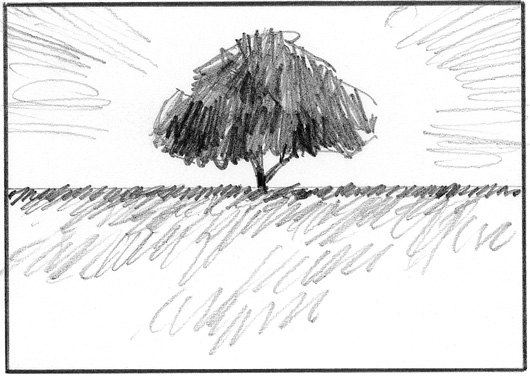
Though this scene is evenly balanced, it has two strikes against it: the horizontal line splits the scene exactly in half, and because the tree is placed in the middle of the composition, the scene looks contrived.
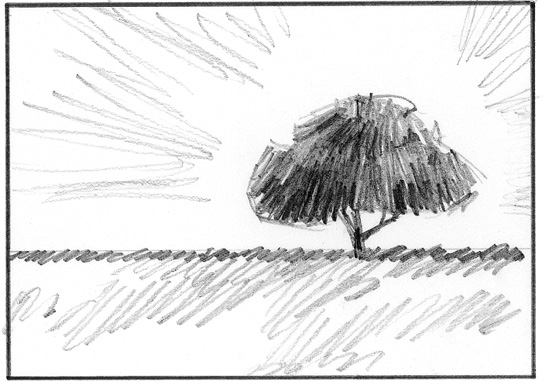
Moving the tree off center makes the scene asymmetrical. The viewer should find this more appealing and realistic.
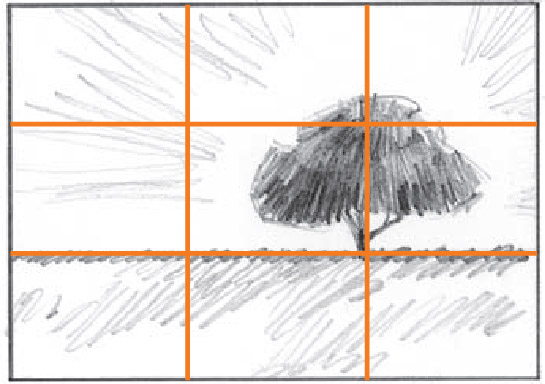
One method for achieving balance in an asymmetrical composition is to divide the picture into nine equal rectangles. Use the intersections of these gridlines to locate major elements in the scene.
Thumbnail sketches allow you to plan what the finished drawing will look like. Examine the differing placement of lights and darks in these examples. Can you tell which thumbnail sketch was used as a guide for the Textured Metal demonstration?

The number and placement of elements can affect the balance of the composition and by leading the viewer through the scene. An odd number is usually more interesting than an even number. Evens and odds can also refer to the number of elements reaching the edge of the artwork, which affects the way the viewer's eye travels in and out of the composition.

An even number of elements can seem uninteresting. The viewer's eye has nowhere to go but from one fish to the other.
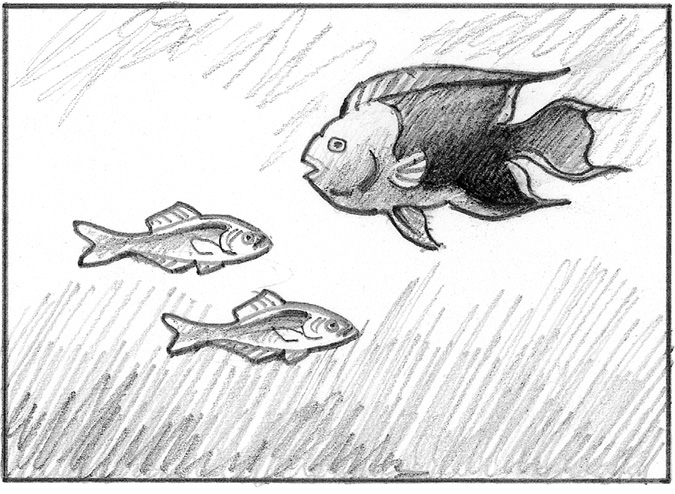
An odd number of elements is usually more interesting than an even number. This scene has an odd number of elements, with one dominant and two subordinate elements. The viewer is first drawn to the big fish, then to the smaller fish, then back to the big fish.
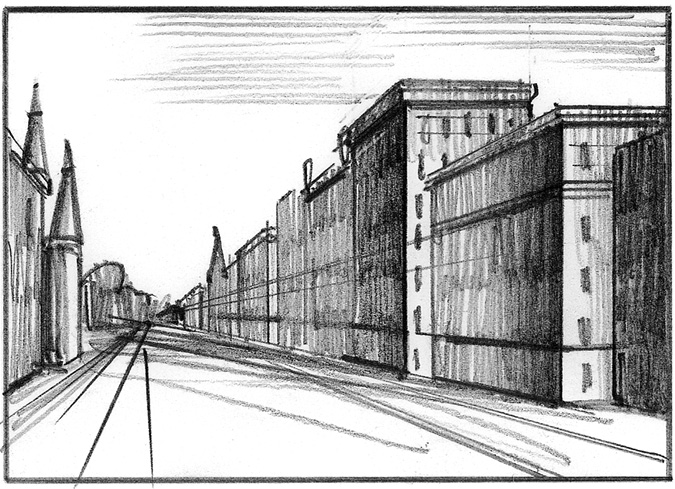
Evens and odds can also refer to the number of elements that reach the edge of the artwork. In this example, the buildings are touching the edge on the left and the right, making an even number.

A simple change allows the buildings to touch the edge on the left, right and top, creating a more interesting composition.
Some scenes contain too much visual information to include in a composition, and it can be hard to determine where to begin and what to leave out. By looking through a viewfinder, you can visually crop the composition before you pick up the pencil. Once you have determined the area you want to include, you will find the drawing easier to manage.
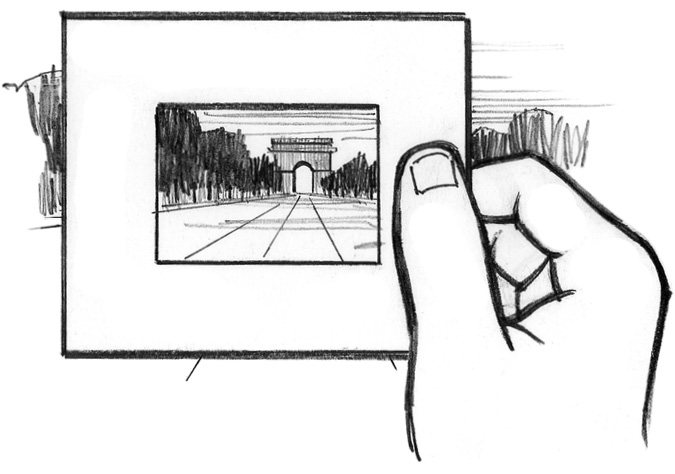
One method for planning a composition is to crop the scene with a view-finder, a piece of cardboard with a cutout like a window frame. This is especially helpful when working outdoors, when the subject may seem overwhelming and you don't know where to focus your attention.
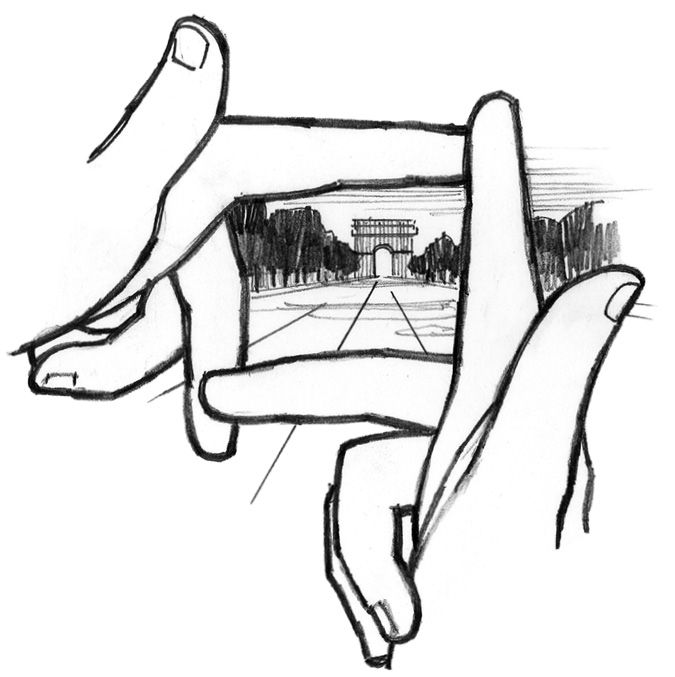
Forming a rectangle with your fingers is another way to crop a scene without using any special equipment.
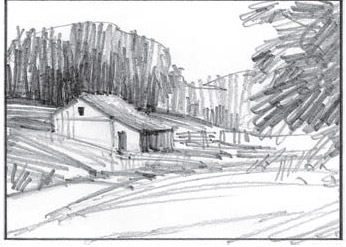
The mood of a picture can be accentuated by its overall shape, or format. A horizontal format tends to give a stable, more serene feel, while a vertical format can feel more impressive or powerful.

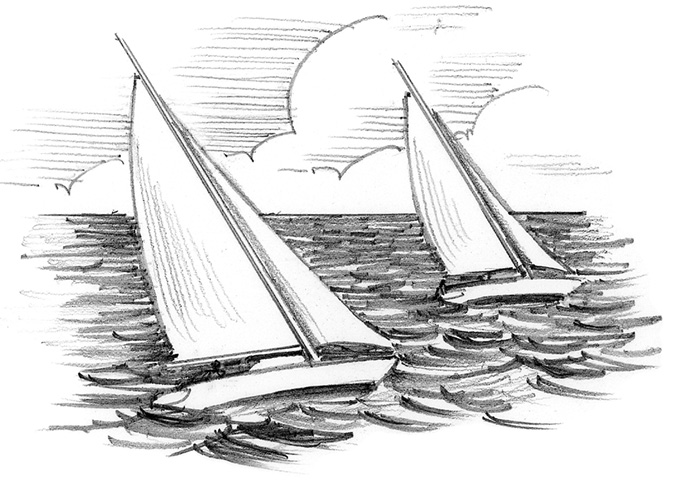
Diagonal lines and angled elements create a sense of action in a drawing.
Leading lines guide the viewer through a composition. Lines can be indicated through a pattern of elements, such as stepping stones that lead the viewer to another place in the composition. Leading lines can also guide the viewer to a focal point, which is the center of interest in a composition.
In art, a tangent is the unfortunate meeting of two or more similar lines or elements. Artists usually avoid tangents because they can make a scene confusing.
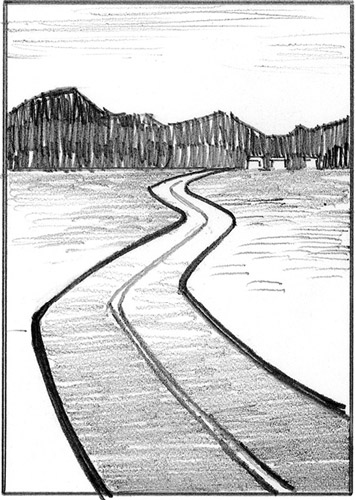
In this example we are led back to the distant mountains.
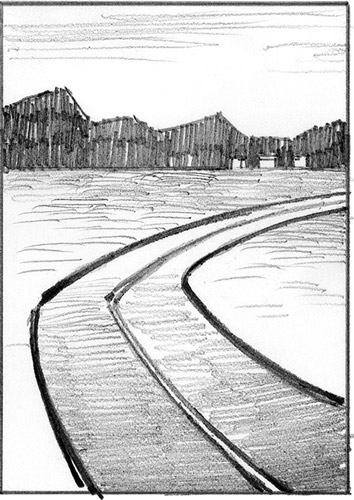
Not all lines lead properly. They may lead the viewer right out of the scene.
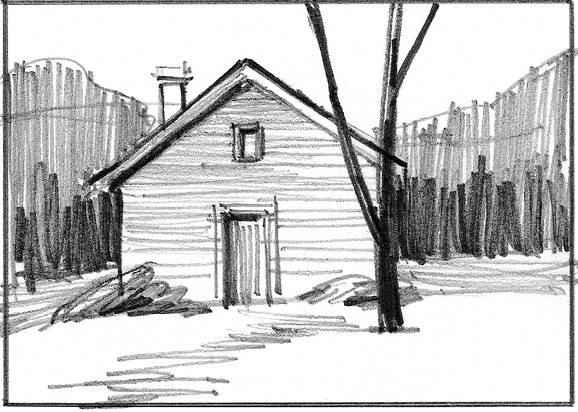
Tangents can be confusing for a viewer. This sketch has a tangent where the tree aligns with the end of the house, making it look as if the tree were part of the house.

An easy remedy for this example is to move the tree slightly away from the corner of the house to avoid a tangent.
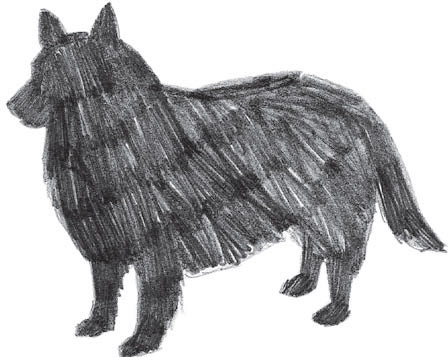
With this shape, it's clear this is a dog

This shape makes it less clear what the subject is
Make your drawing experience easier by looking for subjects with an outer shape that is easy to identify. The form of a dog standing is more identifiable than the form of the same dog lying down. If you were to try to draw this dog lying down, the process of sketching and shading the dog's shape could become a bit taxing.